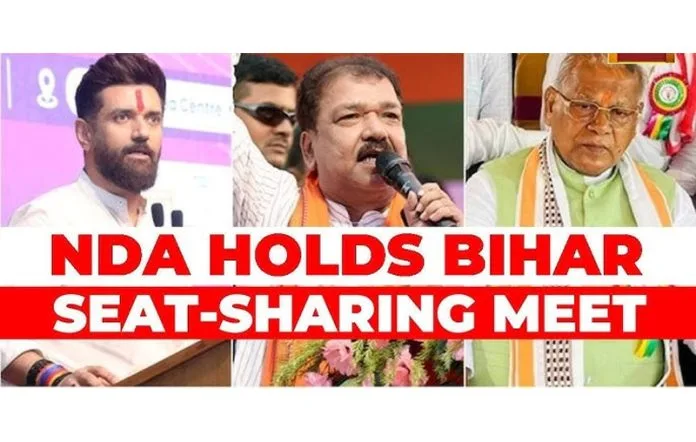The ruling National Democratic Alliance (NDA) in Bihar on Sunday finalised its seat-sharing arrangement for the upcoming elections to the 243-member assembly. Both Chief Minister Nitish Kumar’s Janata Dal (United) (JD(U)) and the Bharatiya Janata Party (BJP) will contest 101 seats each, while the remaining 41 seats have been distributed among smaller allies.
Under the arrangement, Lok Janshakti Party (Ram Vilas) led by Union Minister Chirag Paswan has secured 29 constituencies. Meanwhile, Hindustani Awam Morcha (HAM) of Jitan Ram Manjhi will contest six seats, and Rashtriya Lok Morcha of Upendra Kushwaha will also compete in six seats.
This agreement marks the first instance since 2005, when Nitish Kumar first led the NDA to power, that the JD(U) will not contest more seats than the BJP. This shift highlights the BJP’s growing influence and the JD(U)’s diminished standing in the state’s political landscape.
BJP’s Bihar poll in-charge, Dharmendra Pradhan, confirmed that all partners reached the decision “in a cordial manner.” He stated, “Bihar is ready for another NDA government.” Similar sentiments were echoed by Paswan, Kushwaha, and JD(U) leader Sanjay Kumar Jha, who referred to the talks as “amicable and unanimous.”
Despite prior reports of discontent within the alliance, Jitan Ram Manjhi accepted the allocation, asserting, “We are satisfied with what we have received… I will stay with Prime Minister Narendra Modi till my last breath.” His comments reflect a commitment to the NDA and its leadership.
In the previous 2020 assembly polls, the JD(U) contested 115 seats, while the BJP fielded candidates in 110. Additionally, HAM contested seven seats. Ultimately, JD(U) secured only 43 seats, while the BJP achieved an impressive 74, which subsequently strained the alliance. This led to a brief moment where Nitish Kumar exited the NDA.
The upcoming Bihar Assembly elections are set to take place in two phases—on November 6 and 11, with the counting of votes scheduled for November 14. As the political atmosphere heats up, all parties closely observe voter sentiments, paving the way for a competitive and highly anticipated electoral season.

